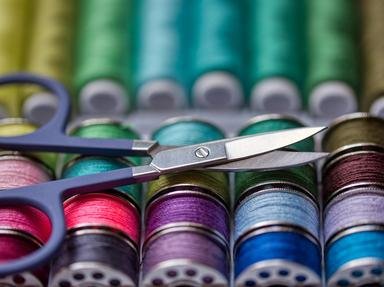Quiz Answer Key and Fun Facts
1. A crochet project usually starts with a number of chain stitches, which forms a row of stitches that somewhat resembles a braid. What is the name given to this preliminary row?
2. Different parts of the world use different terms for the same stitch which can be confusing.
Is it true or false that different parts of the world use the *same name* for *different stitches*?
3. One of the most well-known and versatile crochet patterns is a square worked in rounds which gives a distinctive design named after which family member?
4. One big difference between crochet and knitting, generally speaking, is that knitting holds multiple stitches on two needles while crochet uses one hook to complete one stitch at a time. However, there is a variant of crochet sometimes regarded as intermediate between the two that uses an elongated hook and keeps the stitches on the hook until the row is finished. Which country is this technique named after?
5. Which of the following websites would generally be *least* useful for a crocheter?
6. Whether regarded as street art or graffiti, it is becoming more common to see crocheted (or knitted) pieces out and about in the street, such as around lampposts, postboxes, or even statues. Which of these militant-sounding names is this usually known by?
7. A form of crochet imitating Venetian Gros Point lace became popular in the 19th century and was taught in convents all across which of these countries, where it formed part of the Famine Relief Schemes?
8. Amigurumi is the name given to crocheted (or knitted) dolls or animals that are usually filled with stuffing. These are usually stitched "in the round", similar to some hat or tablemat patterns. From which language does the name "amigurumi" come?
9. A technique that is becoming more popular nowadays is one that uses blocks of filled stitches versus open spaces to create a pixelated effect that is somewhat reminiscent of lacework. What name is given to this versatile technique?
10. Daina Taimina is a Latvian mathematician at Cornell University who uses crochet models to teach her students about which aspect of geometry?
Source: Author
reeshy
This quiz was reviewed by FunTrivia editor
agony before going online.
Any errors found in FunTrivia content are routinely corrected through our feedback system.
